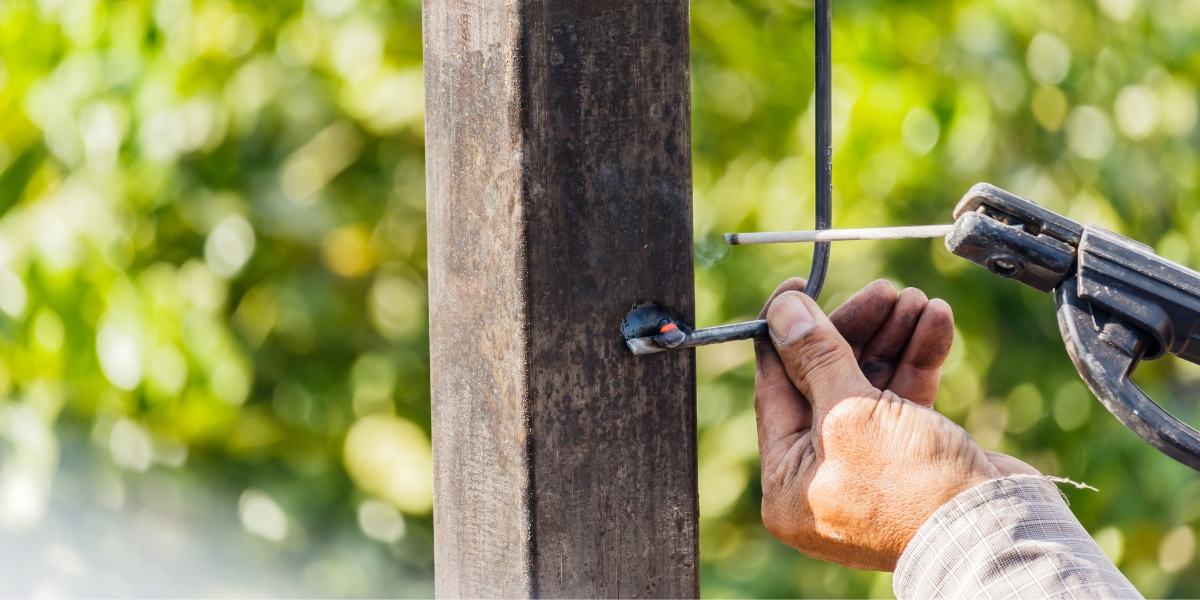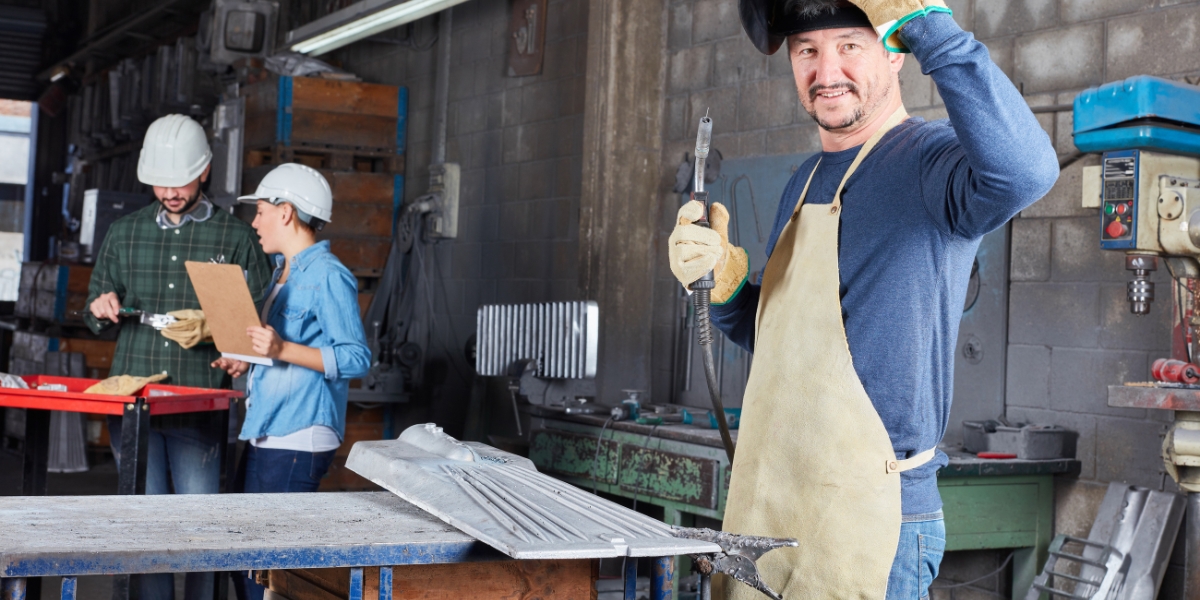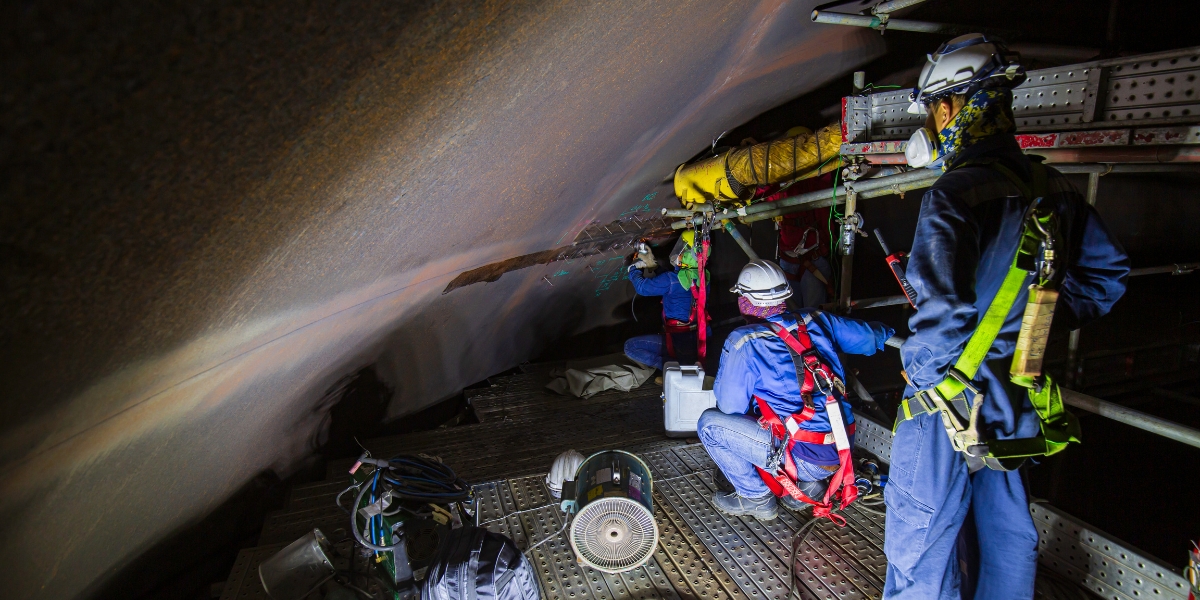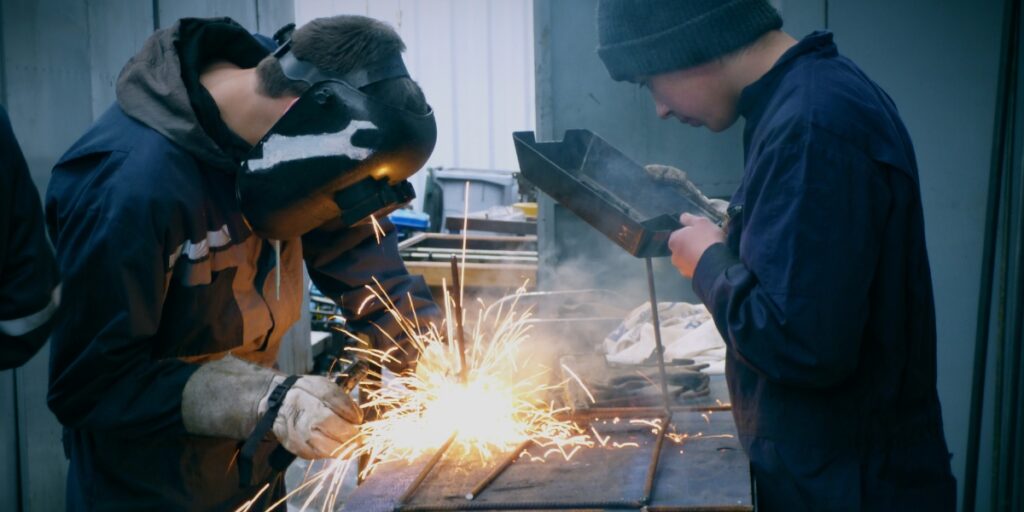Mobile welding is an essential practice in various industries, but it comes with inherent risks that can lead to accidents and injuries. This article aims to provide a comprehensive understanding of mobile welding safety measures to protect workers and prevent potential mishaps.
By exploring the importance of proper training and certification, the use of protective equipment and gear, creating a safe work environment, as well as regular inspections and maintenance, this article seeks to equip readers with valuable knowledge on safeguarding against welding-related hazards.
Key Takeaways
– Mobile welding safety measures are important for reducing workplace accidents and protecting workers from injuries.
– Personal protective equipment (PPE) is essential for mobile welding, including welding helmets, fire-resistant clothing, protective gloves, safety glasses or face shields, and welding boots or shoes.
– Hazard identification and risk assessment are crucial in mobile welding to identify potential hazards, assess the severity and likelihood of accidents, and implement measures to eliminate or control hazards.
– Ventilation and air quality play a significant role in mobile welding safety by installing local exhaust ventilation systems, using fume extraction equipment, ensuring adequate airflow in confined spaces, and minimizing exposure to welding fumes and gases.

Understand the Risks of Mobile Welding
The understanding of the risks associated with mobile welding is crucial for ensuring the safety of workers and preventing accidents. Risks assessment plays a vital role in identifying potential hazards and implementing appropriate safety protocols.
Mobile welding involves working in various environments, often outdoors or in confined spaces, which can pose unique challenges. One of the main risks is exposure to harmful fumes and gases emitted during the welding process, such as nitrogen oxides and ozone. These substances can have detrimental effects on respiratory health if proper ventilation systems are not in place.
Additionally, there is a risk of fires or explosions due to sparks igniting flammable materials nearby. Adequate training, personal protective equipment (PPE), regular maintenance checks on equipment, and adherence to safety guidelines are essential for mitigating these risks effectively.
Proper Training and Certification
Proper training and certification in the field of welding is crucial for ensuring the competence and expertise of individuals engaged in welding activities. Training effectiveness plays a significant role in equipping welders with the necessary skills to perform their work safely and efficiently.
By undergoing comprehensive training programs, welders gain knowledge about various welding techniques, safety measures, and industry regulations. These programs cover topics such as hazard identification, proper handling of equipment, use of personal protective equipment (PPE), fire prevention, and emergency response procedures.
Effective training ensures that welders are aware of potential risks associated with their work environment and are equipped to mitigate them effectively. Certification further validates the skills acquired through training and provides employers with confidence in the capabilities of their workforce.
Industry regulations often require certified welders to ensure compliance with safety standards and maintain a safe working environment for all involved parties.
Use Protective Equipment and Gear
Effective use of protective equipment and gear is essential in welding to minimize potential risks and ensure the safety of individuals involved.
The use of goggles is crucial in protecting the welder’s eyes from harmful ultraviolet (UV) and infrared (IR) radiation emitted during the welding process.
Welding gloves provide protection against burns, sparks, and heat generated by the welding arc. Additionally, they offer insulation against electrical shock hazards. These gloves are typically made from materials such as leather or Kevlar, which can withstand high temperatures without compromising dexterity.
It is important for welders to wear proper protective gear to prevent injuries such as eye damage or burns that can lead to long-term consequences.

Create a Safe Work Environment
Creating a safe work environment is crucial in ensuring the well-being of workers and minimizing accidents.
One key aspect of a safe work environment is maintaining a clean and organized workspace, which helps prevent tripping hazards and promotes efficiency.
Additionally, proper ventilation and air quality control are essential to protect workers from harmful fumes or gases that may be present in the workplace.
Lastly, implementing fire prevention measures and having emergency response protocols in place can greatly reduce the risk of fires and ensure prompt action in case of emergencies.
Importance of a clean and organized workspace
Maintaining a clean and organized workspace in mobile welding operations is crucial for ensuring worker safety and preventing accidents. Regular cleaning of the workspace offers several benefits.
Firstly, it helps to remove any potential hazards such as debris, oil spills, or flammable materials that can cause accidents or fires. Additionally, a clean workspace allows for better visibility of equipment and tools, reducing the risk of injuries from accidental tripping or collisions.
Moreover, an organized workspace promotes efficiency and productivity. Workers can easily locate their tools and equipment when they are properly stored and labeled, saving valuable time. Furthermore, a clutter-free environment enables smooth movement around the workspace, facilitating seamless workflow and minimizing delays.
Proper ventilation and air quality control
Proper ventilation and air quality control are essential in ensuring a safe and healthy working environment for individuals engaged in welding operations. Ventilation systems play a crucial role in removing hazardous fumes, gases, and particles generated during the welding process. These systems work by either diluting the contaminants with fresh air or capturing them through local exhaust hoods.
Adequate ventilation helps prevent respiratory problems, such as occupational asthma or metal fume fever, which can result from prolonged exposure to welding fumes. Regular air quality testing is necessary to assess the effectiveness of ventilation systems in maintaining acceptable levels of airborne contaminants. Testing should include monitoring for specific substances emitted during welding, such as chromium, nickel, and manganese.
Fire prevention and emergency response measures
Transition: Moving on from discussing proper ventilation and air quality control, it is crucial to address fire prevention and emergency response measures in mobile welding safety. A comprehensive safety plan must include effective strategies for preventing fires and responding promptly in case of emergencies.
– Fire Suppression Systems: Installing appropriate fire suppression systems, such as automatic sprinkler systems or fire extinguishers, can help contain and extinguish fires before they spread uncontrollably.
– Evacuation Procedures: Developing clear evacuation procedures that outline escape routes, assembly points, and communication protocols ensures a swift and organized response to fire incidents.
– Training and Education: Providing thorough training to workers on fire safety practices, including how to operate firefighting equipment properly, enhances preparedness and reduces the risk of accidents.
– Regular Inspections: Conducting regular inspections of equipment, electrical wiring, storage areas, and other potential fire hazards helps identify any issues or deficiencies that need immediate attention.
Implementing these measures significantly contributes to safeguarding workers’ lives while minimizing property damage caused by fires during mobile welding operations.

Regular Inspections and Maintenance
Regular inspections and maintenance of welding equipment are essential for ensuring the safety of workers and preventing accidents.
Regular inspections involve a thorough examination of all components, including cables, connectors, gas lines, regulators, and valves. Inspections should be conducted by trained personnel who can identify any signs of wear, damage, or malfunction.
Additionally, preventive maintenance should be performed according to manufacturer guidelines. This may include cleaning and lubricating parts, replacing worn-out components, testing electrical connections, and calibrating equipment as necessary.
Frequently Asked Questions
How long does it take to complete the training and certification process for mobile welding?
The training duration and certification process for mobile welding can vary depending on the specific program or institution. It typically involves a combination of classroom instruction, hands-on practice, and assessment procedures.
What types of protective equipment and gear are recommended for mobile welding?
Protective equipment and gear are crucial in mobile welding to ensure worker safety. Such equipment includes flame-resistant clothing, welding helmets with face shields, gloves, and steel-toed boots. Adhering to safety regulations is vital for accident prevention and safeguarding workers’ well-being.
Are there any specific safety regulations or guidelines that employers need to follow to create a safe work environment for mobile welding?
Specific safety regulations and guidelines must be followed by employers to ensure a safe work environment for mobile welding. These regulations and guidelines are put in place to protect workers from potential hazards associated with the process.
How often should regular inspections and maintenance be conducted for mobile welding equipment?
Regular inspections and maintenance should be conducted on mobile welding equipment at least once every six months. This frequency ensures that potential issues are identified and addressed promptly, minimizing the risk of accidents and ensuring the safety of workers.
Are there any specific steps or precautions to be taken when welding in outdoor or remote locations?
Outdoor welding requires specific precautions to ensure safety. These include assessing the weather conditions, ensuring proper ventilation, using appropriate personal protective equipment, securing the work area, and having a fire extinguisher readily available. Safety measures for remote welding should also include communication plans and emergency protocols.

